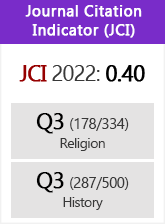The Visigothic Monarchy and the Church in Spanish Levant. The roots of a Country
DOI:
https://doi.org/10.3989/hs.1997.v49.i99.669Abstract
The Mozarabic Church of visigothic tradition was still strong in the late xith Century. In 1084 Sancho Ramírez, King of Aragón, tried to use the Mozarabic legend of the so called Apostolic Fellows in order to legitimate his independence against the powerful! Alfonso VI of Castile and to make easier his influence on the Mozarabs of Spanish Levant and SE. The late visigothic conquest of Ebro's valley and Catalonia made marginal Valencia lands. And so, in mid VIth Century, this was becoming an actual country. Such a distinctive condition was backed by the old urban aristocracies holding sees and monasteries. Of course, this independece specially was evidenced in the ecclesiastic matters, showing its opposition to the old and new metropolitan sees of Cartagena and Toledo. The Byzantine attack and conquest in 552 and its following war againts the Visigoths miscarried this independence, and Valencia and its see became a strategic stronghold in the gothic expansionism.
Downloads
Download data is not yet available.
Downloads
Published
1997-06-30
How to Cite
García Moreno, L. A. (1997). The Visigothic Monarchy and the Church in Spanish Levant. The roots of a Country. Hispania Sacra, 49(99), 253–277. https://doi.org/10.3989/hs.1997.v49.i99.669
Issue
Section
Articles
License
Copyright (c) 2018 Consejo Superior de Investigaciones Científicas (CSIC)

This work is licensed under a Creative Commons Attribution 4.0 International License.
© CSIC. Manuscripts published in both the printed and online versions of this Journal are the property of Consejo Superior de Investigaciones Científicas, and quoting this source is a requirement for any partial or full reproduction.All contents of this electronic edition, except where otherwise noted, are distributed under a “Creative Commons Attribution 4.0 International” (CC BY 4.0) License. You may read here the basic information and the legal text of the license. The indication of the CC BY 4.0 License must be expressly stated in this way when necessary.
Self-archiving in repositories, personal webpages or similar, of any version other than the published by the Editor, is not allowed.














